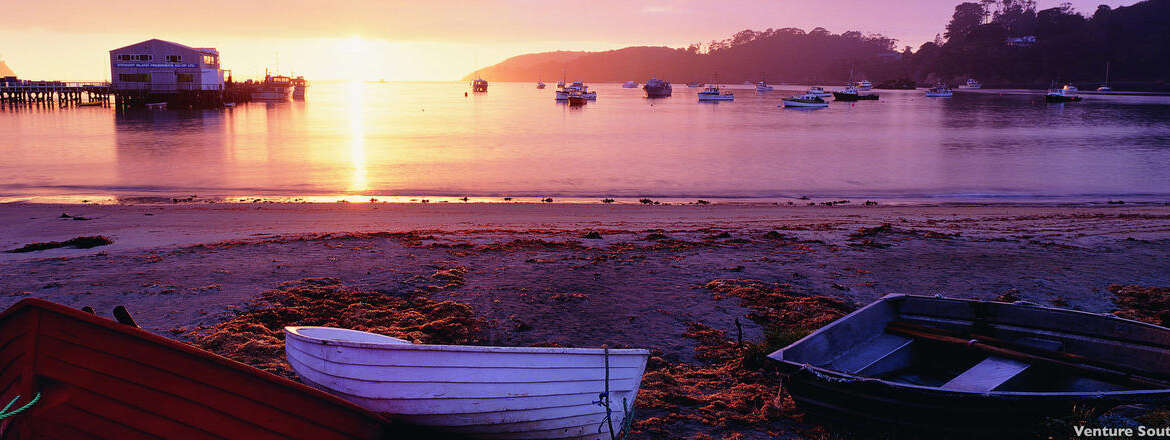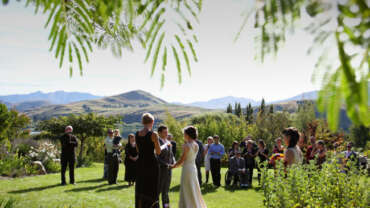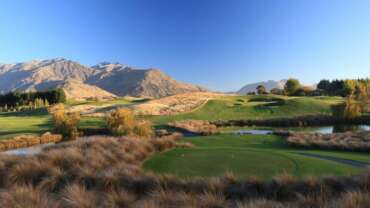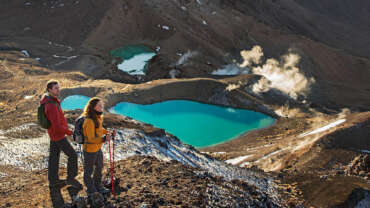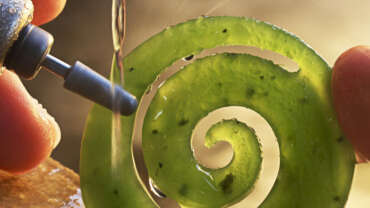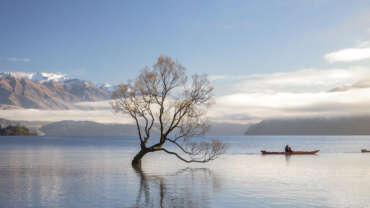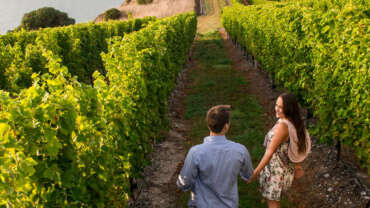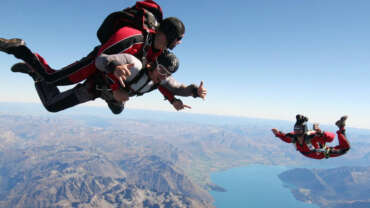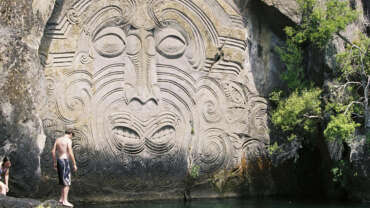Other Island of New Zealand
Go off the beaten track and explore unique landscapes, fascinating wildlife and stunning beauty. From the wild Stewart Island, where brown kiwi outnumber humans, to the remote Chatham and Subantarctic Islands, there is something truly special to be found on New Zealand’s other islands.
CHATHAM ISLANDS
The Chatham Islands are a remote ocean-bound wilderness and are most famous for plentiful fresh seafood and fascinating marine and wildlife. With outstanding scenery and welcoming hosts, these islands will leave a lasting impression on you.
The Chatham Islands consists of two main islands, Chatham Island and Pitt Island located approximately 800 kilometres east of New Zealand.
A far-flung adventure
When you visit the Chatham Islands you are at the remotest eastern point of New Zealand and the furthest internal flight possible.
Here are some handy things to know:
– There are only 660 local residents.
– The islands get approximately 2,000 visitors per year.
– The time zone is 45 minutes ahead of the mainland.
– There is no cellphone coverage on the Chatham Islands.
– Passports aren’t required to fly to the Chatham Islands.
– The currency on the islands is the New Zealand dollar.
As most goods, including fuel, must be transported to the island by ship or plane, expect your visit to be a little more costly than on the mainland. You can be sure that is well worth the extra investment.
Accommodation and transport are limited on the islands and with most of the land privately owned, is it essential to book tours well in advance.
Home of the Moriori
The Chatham Islands were first inhabited by the Moriori people. European sealers and whalers were the next to arrive, followed by Māori from the New Zealand mainland. Descendants of Moriori still live in the Chatham Islands and visiting Kopinga Marae will give you great insights into the culture.
The overall shape of the uniquely designed marae represents an albatross in flight, a bird that has great cultural significance to Moriori. It is the base for the revival of Moriori language, cultural traditions, wānanga (meeting together to learn) and community and school events.
Visitors will hear stories of the Moriori people and their ancient covenant of peace and view intricate carvings and artwork. A trip to view the statue of Tommy Solomon (Tame Horomona Rehe), the last full-blooded Moriori, at Manukau east of Owenga, is also worthwhile.
SUBANTARCTIC ISLANDS
New Zealand’s remote Subantarctic Islands are a region of wild landscapes, unique wildlife and forgotten beauty.
Located south of New Zealand in the remote Southern Ocean, the wild and beautiful Subantarctic Islands are a forgotten paradise. They are home to some of the most abundant and unique wildlife on earth, with many species of birds, plants and invertebrates found nowhere else in the world.
These remote islands have UNESCO World Heritage status and the highest protection of any nature reserves in New Zealand.
Although a strict management plan restricts the number of people allowed ashore each year, some tour companies such as Heritage Expeditions and Wildlife and Wilderness operate tours to the islands at various times throughout the year.
The Snares
Lying about 100km southwest of Stewart Island/Rakiura, the Snares, is one of the most untouched and pristine areas in New Zealand.
Forests of large tree daisies cover the islands and hundreds of birds, seals and invertebrates inhabit the steep cliffs.The Snares are home to several endemic species including three land birds and a number of invertebrates.
The Auckland Islands
The Auckland Island group are the largest of New Zealand’s Subantarctic Islands. The islands are an important breeding ground for many seabirds, including the rare yellow-eyed penguin, white capped mollymawk, Gibson’s wandering albatross, the sooty shearwater and the endemic Auckland shag.
Campbell Island
English botanist Joseph Hooker described Campbell Island as having a “flora display second to none outside the tropics.” It is particularly known for its megaherbs; giant perennial wildflowers, which have developed as an adaptation to the harsh weather conditions on the islands.
The island has been severely affected by human activity, but since 1954, a process of pest eradication has allowed the native wildlife to return and flourish.
STEWART ISLAND – RAKIURA
Stewart Island is New Zealand’s third largest island, situated 30 kilometres south of the South Island, across the Foveaux Strait.
In the Māori language, it’s known as Rakiura which means ‘the land of glowing skies’. You’ll get an inkling why when you see the Aurora Australis which often appears in these southern skies.
Over 85% of the island is National Park, and most people come here for the hiking and birdwatching. The island has just 28km of road, but 280km of walking tracks suited to short walks, day walks and multi-day hikes. Walk the three-day Rakiura Track and you will get the full experience of Stewart Island’s wild beauty.
Stewart Island is a haven for brown kiwi or Tokoeka, which outnumber humans on the island and are active day and night. Blue penguins and the rare yellow-eyed penguins waddle among the rocks. Offshore on Ulva Island, you’ll find a predator-free bird sanctuary with dozens of native species.
The 400 or so Stewart Islanders are a proud and independent bunch, but they’re friendly too. There’s only one settlement of any size on the island – Halfmoon Bay, sometimes called Oban, which offers a wide variety of accommodation.
If you’re walking the tracks, the Department of Conservation provides huts for overnight hikes. DOC has a visitor centre on the island where you can find out more.
One of the best ways to experience Stewart Island is with a boat cruise. You’ll explore secluded bays and beautiful inlets – and, if you’re lucky, you may see penguins, dolphins or even an albatross.
Stewart Island, New Zealand, can be reached by ferry from Bluff, or by light aircraft from Invercargill. Ulva Island is accessible by water taxi.
GREAT BARRIER ISLAND
Great Barrier Island is a large island with a small population. The forests, beaches and bays provide scope for all kinds of wilderness adventures. The island is entirely off-grid relying on renewable solar power and collection of freshwater. With a population of around 1000 people, the locals are sure to welcome you to their vibrant, self-sufficient community.
Great Barrier Island is the largest and most seaward of the Hauraki Gulf islands in the Auckland region. For thousands of years, it has sheltered Auckland’s harbour from the relentless swells of the Pacific Ocean, creating a boating paradise.
The 90 kilometre journey from Auckland city takes about 4.5 hours by fast ferry or you can catch a 30-minute flight with Fly My Sky(opens in new window) or Barrier Air.
The eastern shore of Great Barrier Island faces the ocean with high cliffs and long white surf beaches; the western side offers deep sheltered harbours and calm sandy bays.
More than 60 percent of Great barrier Island’s 285 square kilometres is public land administered by the Department of Conservation. The native forest is laced with beautiful walking tracks, which lead to secluded natural hot springs and a historic Kauri dam. These wilderness areas, foreshores, and estuaries are home to several unique plant and bird species. Rising 627 metres above the sea, Hirakimata (Mount Hobson) beckons the hiker with the promise of incredible 360-degree views.
There are several ways that you can get around Great Barrier Island while visiting. Shuttle and transfer companies operate throughout the island or there is a wide range of rental cars, vans and electric motorbikes available for daily hire. It is best to pre-arrange transport before your arrival.
Great Barrier Island is a popular destination for diving, fishing, surfing, kayaking, mountain biking, hiking, camping and star gazing. Accommodation options range from tent sites to luxury eco-lodges.
Tryphena is the largest settlement on the island and is situated on the west coast. Home to a number of picturesque family-friendly beaches, dolphins are often spotted here close to the shoreline.
A number of events are held on Great Barrier Island every year, including the delicious FitzRoy Mussel Fest, which celebrates the mouth-watering mussels the area is known for. There’s also ‘wharf2wharf’, a marathon-length sporting event where athletes walk, run or cycle across the island, and the Great Barrier garden tour(opens in new window), which showcases the island’s stunning residential gardens.
Other settlements include Whangaparapara and Tryphena on the western side; Claris on the eastern side.
Enjoy the island’s emerging dining culture and sample fresh locally produced Mānuka honey, beer and gin. Indulge in natural, homemade skincare products made by locals.
ISLANDS
Shrouded in forest or speckled with farms and holiday homes, islands have a special charm that kicks in the moment you step ashore. Not counting the North and South Islands, our largest island is Rakiura – known to most as Stewart Island. This southern paradise is home to our newest national park. It’s a place for hiking, bird watching and star gazing.
Other islands devoted to the protection of wildlife include Kapiti north of Wellington and Tiritiri Matangi in the Hauraki Gulf.
From Auckland city, you can catch ferries to populated islands such as Waiheke and Great Barrier. Waiheke is a picturesque blend of farmland, forest, beaches, vineyards and olive groves. Great Barrier has the kind of rugged, untouched beauty that appeals to adventurers.
Further north you can discover the Bay of Islands, a large area of offshore islands between Cape Brett and the Purerua Peninsula. Charter a boat, hire a kayak or catch a cruise to enjoy this spectacular maritime playground.
NEW ZEALAND’S UNIQUE ISLANDS
Dive turquoise water, walk on active volcanoes, drink wine or simply relax in the wilderness.
New Zealand's Unique Islands
Poor Knights Island, Northland
The place Jacques Cousteau rated among the top 10 dive spots in the world, Poor Knights Island is a playground for snorkelling, cruising and exploring. It’s easy to get to from Northland, or charter a boat from Tutukaka, Bay of Islands or Auckland.
Rangitoto Island, Auckland
Take the ferry from downtown Auckland to Rangitoto Island and explore the volcanic terrain and lava fields on your way up to the top, where you will get spectacular 360-degree views. If you’re feeling energetic, take a sunset kayak tour before paddling back in the dark.
Stewart Island – Rakiura
You can get to Stewart Island, New Zealand’s third-largest island, by sea or air. Stay in Halfmoon Bay (also known as Oban), or walk along one of Rakiura National Park’s 280km of walking tracks. Marvel at the wildlife including blue penguins or brown kiwi – who outnumber the 600 humans who live there.
Waiheke Island, Auckland
A must-do for anyone visiting Auckland, the ferry to Waiheke Island only takes 40 minutes, meaning you’ll be sipping wine in no time. Take a wine tour or simply use the public bus to explore the island, consistently voted among the best in the world.
Kapiti Island, Wellington
Kapiti Island is home to some of New Zealand’s most endangered birds with the protected waters teeming with marine life. For an alternative accommodation style, try glamping and fully immerse yourself in nature.
Great Barrier Island
Despite its small population, Great Barrier Island has a lot to offer with forests, beaches and bays begging to be explored. Go diving, fishing, surfing, kayaking, mountain biking, hiking and camping. Only 30 minutes flight from Auckland, you can stay in a tent or luxury eco-lodge.
Chatham Islands
With a population of about 600, the Chatham Islands feel remote, they even have their own time zone (45 minutes ahead of New Zealand). Air Chathams operate regular flights from Auckland, Wellington and Christchurch you can fly straight into the wilderness where you’ll taste great seafood and witness fascinating nature and wildlife and flora unique to these far-flung islands.



